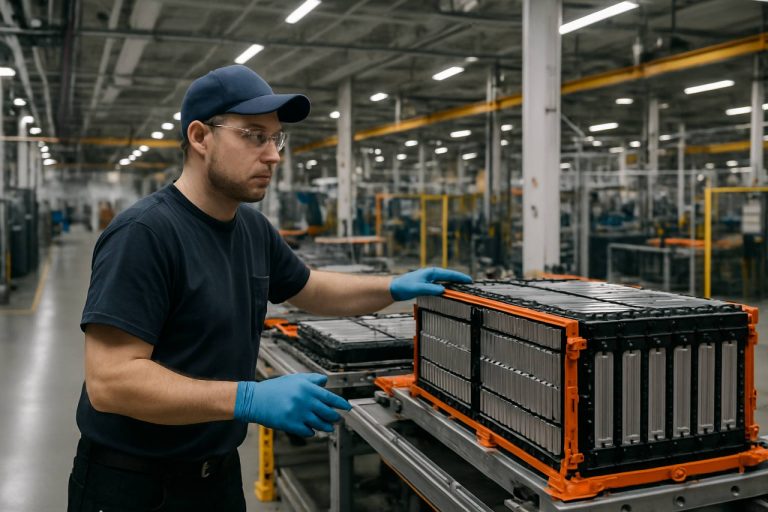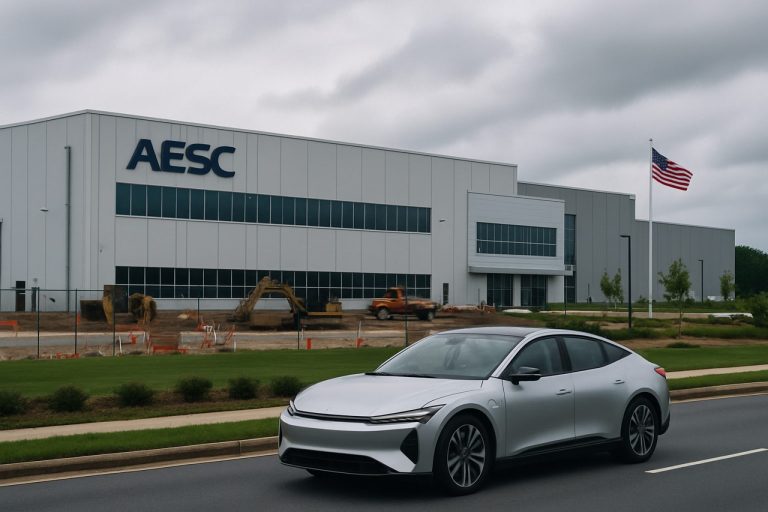
Blockchain-Backed Carbon Credit Markets 2025: Unveiling Growth, Innovation, and Global Impact. This report delivers in-depth analysis of market trends, technology advancements, and future opportunities shaping the next 3–5 years.
- Executive Summary & Market Overview
- Key Technology Trends in Blockchain-Backed Carbon Credits
- Competitive Landscape and Leading Players
- Market Growth Forecasts (2025–2030): CAGR, Volume, and Value Analysis
- Regional Market Analysis: North America, Europe, APAC, and Emerging Markets
- Future Outlook: Innovations and Market Evolution
- Challenges, Risks, and Strategic Opportunities
- Sources & References
Executive Summary & Market Overview
The blockchain-backed carbon credit market is rapidly emerging as a transformative force within the global carbon trading ecosystem. Carbon credits, which represent the right to emit a specific amount of carbon dioxide or equivalent greenhouse gases, have traditionally been traded through centralized registries and exchanges. However, the integration of blockchain technology is revolutionizing this landscape by introducing enhanced transparency, traceability, and efficiency to the issuance, trading, and retirement of carbon credits.
In 2025, the market for blockchain-enabled carbon credits is projected to experience robust growth, driven by increasing regulatory pressure for corporate decarbonization, heightened investor demand for verifiable ESG (Environmental, Social, and Governance) assets, and the need to address persistent issues of double counting and fraud in traditional carbon markets. According to World Bank data, the global voluntary carbon market surpassed $2 billion in value in 2023, with blockchain-based platforms capturing a growing share of this volume.
Key players such as Toucan Protocol, KlimaDAO, and Verra are leveraging blockchain to tokenize carbon credits, enabling real-time tracking and immutable proof of ownership. These innovations are attracting both institutional and retail participants, fostering greater liquidity and accessibility. Furthermore, blockchain’s decentralized architecture reduces reliance on intermediaries, lowering transaction costs and accelerating settlement times.
Despite these advancements, the market faces challenges related to interoperability between blockchain platforms, regulatory uncertainty, and the need for standardized methodologies for credit verification and tokenization. Nonetheless, ongoing collaborations between technology providers, standards organizations, and regulatory bodies are paving the way for broader adoption and integration with legacy carbon registries.
Looking ahead to 2025, the blockchain-backed carbon credit market is poised for continued expansion, underpinned by technological innovation, evolving policy frameworks, and growing corporate commitments to net-zero targets. As the sector matures, it is expected to play a pivotal role in scaling global climate action and enhancing the integrity of carbon offsetting mechanisms.
Key Technology Trends in Blockchain-Backed Carbon Credits
Blockchain-backed carbon credit markets are rapidly evolving, leveraging distributed ledger technology to address longstanding challenges in the voluntary and compliance carbon markets. In 2025, several key technology trends are shaping the landscape, driving greater transparency, efficiency, and trust in carbon credit issuance, trading, and retirement.
- Tokenization of Carbon Credits: The tokenization of carbon credits—representing each credit as a unique digital asset on a blockchain—has become mainstream. This approach enables fractional ownership, real-time tracking, and seamless transferability of credits across borders. Platforms such as Toucan Protocol and KlimaDAO have pioneered this trend, allowing users to bridge traditional carbon credits onto public blockchains, thus increasing liquidity and accessibility.
- Interoperability and Standardization: In 2025, interoperability between different blockchain networks and carbon registries is a top priority. Initiatives like the International Water Association and Digital Carbon Mitigation Project are working towards standardized protocols for data exchange, ensuring that tokenized credits are recognized across platforms and jurisdictions. This reduces fragmentation and enhances market confidence.
- Automated Verification and Auditing: Smart contracts and oracles are increasingly used to automate the verification of carbon offset projects. By integrating IoT sensors and satellite data, platforms can provide near real-time monitoring and immutable proof of project performance. Verra and Gold Standard are exploring blockchain-based solutions to streamline third-party verification and reduce administrative overhead.
- Decentralized Marketplaces: Decentralized exchanges (DEXs) for carbon credits are gaining traction, enabling peer-to-peer trading without intermediaries. This democratizes access and reduces transaction costs. Projects like Carbonmark are building open marketplaces where buyers and sellers can interact directly, with all transactions recorded transparently on-chain.
- Integration with ESG Reporting: Corporations are increasingly integrating blockchain-backed carbon credits into their ESG (Environmental, Social, and Governance) reporting systems. This ensures traceability and auditability of carbon offset claims, aligning with regulatory requirements and investor expectations. Platforms such as Allinfra are providing end-to-end solutions for ESG data management using blockchain.
These technology trends are collectively enhancing the credibility, scalability, and impact of blockchain-backed carbon credit markets, positioning them as a critical tool in the global effort to achieve net-zero emissions by 2050.
Competitive Landscape and Leading Players
The competitive landscape of blockchain-backed carbon credit markets in 2025 is characterized by rapid innovation, strategic partnerships, and a growing influx of both established players and agile startups. The sector is driven by the need for greater transparency, traceability, and efficiency in carbon credit issuance, trading, and retirement, leveraging blockchain’s immutable ledger technology to address longstanding challenges in the voluntary and compliance carbon markets.
Key players in this space include Toucan Protocol, which has established itself as a pioneer by tokenizing real-world carbon credits and integrating them into decentralized finance (DeFi) ecosystems. Toucan’s infrastructure enables seamless bridging of verified carbon credits onto public blockchains, facilitating transparent trading and retirement. Another major player, KlimaDAO, operates a decentralized autonomous organization that incentivizes the locking of carbon credits on-chain, creating a liquid market for tokenized carbon assets and driving demand for high-quality credits.
Traditional carbon registries and standards organizations are also entering the blockchain space. Verra, one of the world’s largest carbon standards bodies, has announced pilot programs to explore blockchain integration for credit tracking and retirement, aiming to enhance market integrity and reduce double counting. Similarly, Gold Standard is collaborating with technology partners to digitize its registry and enable blockchain-based verification and transfer of credits.
- Flowcarbon is notable for its efforts to create a global marketplace for tokenized carbon credits, backed by high-profile investors and partnerships with project developers.
- Carbonmark offers a decentralized marketplace for buying, selling, and retiring tokenized carbon credits, focusing on user accessibility and transparency.
- Regen Network specializes in ecological asset verification and trading, leveraging blockchain to support regenerative agriculture and nature-based solutions.
The competitive dynamics are further shaped by collaborations between blockchain consortia, carbon project developers, and financial institutions. As regulatory scrutiny increases and corporate demand for verifiable offsets grows, leading players are investing in interoperability, robust verification standards, and user-friendly platforms. The market is expected to see continued consolidation and the emergence of new entrants, particularly as interoperability standards mature and institutional adoption accelerates.
Market Growth Forecasts (2025–2030): CAGR, Volume, and Value Analysis
The blockchain-backed carbon credit market is poised for robust expansion between 2025 and 2030, driven by increasing global climate commitments, demand for transparent carbon offsetting, and the maturation of blockchain infrastructure. According to projections by MarketsandMarkets, the global blockchain carbon credit market is expected to grow at a compound annual growth rate (CAGR) of approximately 55% during this period, outpacing the broader voluntary carbon market. Market value is forecasted to rise from an estimated USD 500 million in 2025 to over USD 4.3 billion by 2030, reflecting both increased transaction volumes and higher average credit prices as demand intensifies.
Volume-wise, the number of carbon credits tokenized and traded on blockchain platforms is projected to surge. Boston Consulting Group estimates that blockchain-enabled platforms could facilitate the issuance and exchange of over 300 million metric tons of CO2 equivalent credits annually by 2030, up from less than 50 million metric tons in 2025. This growth is underpinned by the entry of major corporate buyers, the expansion of decentralized marketplaces, and the integration of blockchain with existing registries and standards.
Key drivers of this accelerated growth include:
- Enhanced transparency and traceability, reducing double counting and fraud, which have historically plagued traditional carbon markets.
- Lower transaction costs and faster settlement times, making participation more attractive for both project developers and buyers.
- Regulatory tailwinds, as governments and international bodies increasingly recognize and support digital MRV (monitoring, reporting, and verification) solutions.
Regionally, Asia-Pacific and Europe are expected to lead in market adoption, with North America following closely, as indicated by IDC. The proliferation of blockchain-native carbon credit platforms—such as those developed by Toucan Protocol and KlimaDAO—is anticipated to further catalyze market growth by providing liquidity and interoperability across jurisdictions.
In summary, the 2025–2030 period will likely see blockchain-backed carbon credit markets transition from early adoption to mainstream scaling, with exponential growth in both market value and transaction volumes, fundamentally reshaping the landscape of global carbon trading.
Regional Market Analysis: North America, Europe, APAC, and Emerging Markets
The global blockchain-backed carbon credit market is experiencing dynamic regional growth, with North America, Europe, Asia-Pacific (APAC), and emerging markets each exhibiting distinct trends and drivers in 2025.
North America remains a leader in blockchain-enabled carbon credit initiatives, driven by robust regulatory frameworks and a mature voluntary carbon market. The United States, in particular, has seen increased adoption of blockchain platforms for carbon tracking and trading, with companies like IBM and Nasdaq piloting blockchain-based registries and marketplaces. The region benefits from strong institutional investment and a growing number of corporate net-zero commitments, fueling demand for transparent, verifiable carbon credits. According to Deloitte, North American blockchain carbon credit transactions are projected to grow at a CAGR of over 30% through 2025.
Europe is characterized by stringent climate policies and a well-established compliance carbon market, notably the EU Emissions Trading System (EU ETS). Blockchain adoption is accelerating as regulators and market participants seek to enhance traceability and prevent double counting. Initiatives such as the European Investment Bank’s blockchain pilot for green bonds and carbon credits exemplify the region’s commitment to digital innovation. The European market is also witnessing increased collaboration between public and private sectors to standardize blockchain protocols for carbon credit issuance and trading.
Asia-Pacific (APAC) is emerging as a high-growth region, propelled by rapid industrialization and government-led decarbonization efforts. Countries like Singapore and South Korea are at the forefront, with the Monetary Authority of Singapore supporting blockchain-based carbon exchanges and pilot projects. China’s national carbon market, while primarily compliance-driven, is exploring blockchain for enhanced data integrity and cross-border credit trading. APAC’s diverse regulatory landscape presents both opportunities and challenges for market harmonization and scalability.
- Emerging Markets—including Latin America, Africa, and Southeast Asia—are leveraging blockchain to address transparency and access issues in voluntary carbon markets. Projects such as Verra’s blockchain pilots in Brazil and Kenya aim to democratize carbon credit issuance for smallholder projects and indigenous communities. These regions are attracting impact investors and climate funds seeking high-integrity, traceable credits.
Overall, regional disparities in regulatory maturity, technological infrastructure, and market demand are shaping the evolution of blockchain-backed carbon credit markets in 2025. However, cross-regional collaboration and standardization efforts are expected to accelerate global market integration and liquidity.
Future Outlook: Innovations and Market Evolution
The future outlook for blockchain-backed carbon credit markets in 2025 is shaped by rapid technological innovation, evolving regulatory frameworks, and increasing demand for transparent, verifiable climate action. As global pressure mounts for credible decarbonization, blockchain technology is poised to address persistent challenges in the carbon credit ecosystem, such as double counting, lack of traceability, and market fragmentation.
In 2025, the integration of blockchain is expected to accelerate the digitization and standardization of carbon credits. Leading platforms are leveraging smart contracts to automate issuance, transfer, and retirement of credits, reducing administrative costs and human error. For example, IBM and Energy Web are collaborating on blockchain solutions that enable real-time tracking and verification of carbon assets, fostering greater trust among buyers and sellers.
Market evolution is also being driven by the entry of major financial institutions and multinational corporations. These entities are increasingly participating in blockchain-based carbon markets to meet ESG targets and regulatory requirements. According to McKinsey & Company, the voluntary carbon market could grow to $50 billion by 2030, with blockchain platforms capturing a significant share due to their ability to provide immutable audit trails and granular data on project impact.
Regulatory developments are expected to play a pivotal role in 2025. Governments and standard-setting bodies, such as the International Organization for Standardization (ISO), are working to harmonize digital MRV (monitoring, reporting, and verification) protocols, which will further legitimize blockchain-backed credits. The World Bank is piloting blockchain-based registries to streamline cross-border credit transfers, signaling a move toward global interoperability.
- Emergence of interoperable blockchain networks, allowing credits to be traded across platforms and jurisdictions.
- Growth of tokenized carbon credits, enabling fractional ownership and increased liquidity.
- Integration with IoT and satellite data for automated, real-time emissions monitoring.
- Expansion of decentralized autonomous organizations (DAOs) to govern carbon credit issuance and project validation.
By 2025, blockchain-backed carbon credit markets are expected to be more transparent, efficient, and accessible, supporting the scaling of high-integrity climate solutions and attracting a broader range of participants from both the public and private sectors.
Challenges, Risks, and Strategic Opportunities
The integration of blockchain technology into carbon credit markets presents a dynamic landscape of challenges, risks, and strategic opportunities as the sector matures in 2025. While blockchain promises enhanced transparency, traceability, and efficiency, several hurdles must be addressed to realize its full potential.
Challenges and Risks
- Regulatory Uncertainty: The global regulatory environment for both blockchain and carbon credits remains fragmented. Jurisdictions differ in their recognition of digital assets and the legal status of tokenized credits, creating compliance complexities for market participants. For example, the U.S. Securities and Exchange Commission and the European Securities and Markets Authority have yet to issue unified guidance on blockchain-based environmental assets, leading to operational ambiguity.
- Verification and Integrity: Ensuring the environmental integrity of tokenized credits is a persistent challenge. While blockchain can record transactions immutably, the quality of underlying carbon projects still depends on robust third-party verification. Concerns about double counting, greenwashing, and the authenticity of emissions reductions persist, as highlighted by Verra and Gold Standard, two leading carbon standards bodies.
- Technical Barriers: Interoperability between different blockchain platforms and legacy registries is limited. This fragmentation can hinder liquidity and market access, as noted by Institute of International Finance. Additionally, the energy consumption of some blockchain networks raises concerns about the net environmental benefit of digital carbon markets.
Strategic Opportunities
- Market Expansion and Liquidity: Blockchain enables fractionalization and global trading of carbon credits, attracting new participants and increasing liquidity. Platforms like Toucan and KlimaDAO have demonstrated the potential for decentralized finance (DeFi) to unlock new capital flows into climate action.
- Enhanced Transparency and Trust: Immutable ledgers and real-time tracking can reduce fraud and build trust among buyers, sellers, and regulators. This transparency is crucial for scaling voluntary and compliance carbon markets, as emphasized in reports by the World Bank and Institute of International Finance.
- Innovation in Project Financing: Blockchain facilitates new models for project funding, such as automated revenue sharing and smart contracts, which can lower transaction costs and accelerate the deployment of climate solutions.
In 2025, the evolution of blockchain-backed carbon credit markets will depend on resolving regulatory and technical challenges while leveraging the technology’s unique capabilities to drive transparency, efficiency, and market growth.
Sources & References
- World Bank
- KlimaDAO
- Verra
- International Water Association
- Gold Standard
- Carbonmark
- Allinfra
- Gold Standard
- Flowcarbon
- Regen Network
- MarketsandMarkets
- IDC
- IBM
- Deloitte
- European Investment Bank
- Monetary Authority of Singapore
- Verra
- Energy Web
- McKinsey & Company
- International Organization for Standardization (ISO)
- European Securities and Markets Authority
- Institute of International Finance



